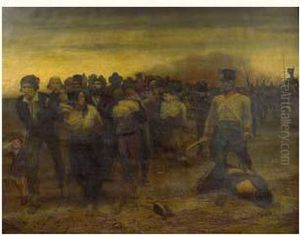Charles Joseph Ernest Paintings
Charles Joseph Ernest, whose full name was Charles Joseph Ernest Venture de Villeneuve, was a 19th-century French artist born in 1823. Not to be confused with other artists who might share similar names, Ernest's works and contributions to the art world are not widely documented in the annals of art history, leading to a somewhat obscure legacy.
Ernest's life, as with many artists of the period, is not extensively chronicled in popular historical records. What is known is that he would have been active during a period of significant change in the art world, a time that saw the rise of movements like Realism, Impressionism, and Post-Impressionism in France. While the details of his training and early career are not well-known, he would have been a contemporary to prominent figures such as Delacroix, Courbet, and Manet, who were actively challenging traditional approaches to art in their own various styles.
Throughout his career, Ernest may have produced paintings, drawings, or engravings that reflected the artistic trends and social changes of his time. However, his work does not appear to have had a significant impact on the art movement of his era, and as such, he remains a relatively minor figure in art history. There is little information regarding specific artworks he might have created or exhibitions he might have participated in.
Charles Joseph Ernest passed away in 1896. The lack of available information about his artistic output and influence means that he is not commonly studied in art history, and his works are not prominently featured in museum collections or major art textbooks. However, like many lesser-known artists of his time, Ernest's life and work may still offer valuable insights into the broader tapestry of 19th-century French art.
